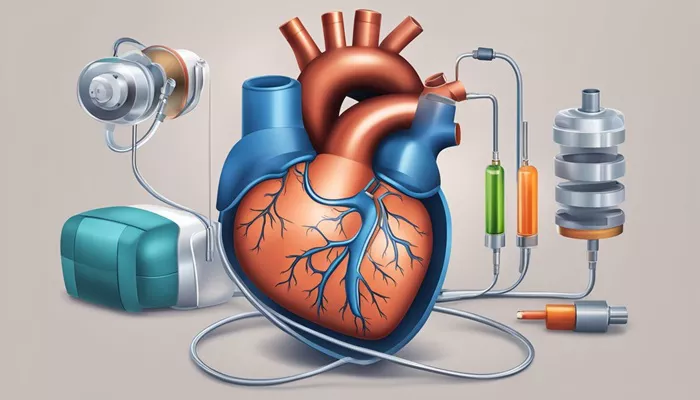The heart is a muscle like no other, beating 60 to 100 times per minute on average, around the clock. But when it grows weak, it can lead to serious problems: from debilitating shortness of breath and swelling in the legs and feet to fluid in the lungs and even death.
In systolic heart failure, which affects more than 32 million people globally, the muscle loses the ability to squeeze hard enough to push oxygenated blood from the heart’s left ventricle through the body via the circulatory system. Recently, researchers have identified a protein with the potential to help improve heart function in these patients.
In a study published this month in the American Journal of Physiology, Warren and her lab demonstrate for the first time that a protein known as PERM1 effectively regulates both energy and the heart’s ability to contract. This research suggests that PERM1 could be a new therapeutic approach to treating systolic heart failure.
The Challenge of Systolic Heart Failure
In recent decades, scientists have developed several drugs aimed at improving heart muscle contraction. However, many of these drugs have faced challenges in significantly improving long-term health, and most have failed to enhance survival rates in clinical trials, according to a review published in the European Journal of Heart Failure.
These drugs typically aim to either increase the force of the heart’s contractions or improve the efficiency of muscle fiber contractions. According to Warren, both approaches increase energy utilization and can actually worsen patient outcomes.
Systolic heart failure results from a vicious cycle. The heart muscle weakens, which in turn inhibits the mitochondria—the energy producers in cells—from performing their functions. This further weakens the heart muscle, exacerbating the condition. According to Warren’s findings, the protein PERM1 regulates both parts of this detrimental cycle.
PERM1 is present in the heart and skeletal muscles and has been shown to regulate mitochondrial function. Because the protein is found in muscles that contract, Warren and her team hypothesized that it might also impact muscle contraction, particularly in the heart.
SEE ALSO: Semaglutide Shows Promise for Heart Health And Weight Loss in Obese Patients, Despite Side Effects
The Unique Nature of The Heart
Warren emphasizes that “the heart is a unique organ. It beats 24 hours a day, seven days a week, with no rest.” This constant activity necessitates a different metabolic process compared to other organs. Understanding the heart’s distinct energy requirements is crucial for developing effective treatments for heart failure.
In their study, researchers delivered the PERM1 protein into the hearts of healthy mice using a disarmed virus known as an adenovirus. Viruses serve as effective delivery vehicles because they can navigate through challenging areas in the body.
Findings From The Study
The study found that PERM1 not only regulated mitochondrial function, as previously known, but also enhanced the heart’s ability to contract. This discovery is significant because it indicates that targeting PERM1 could improve cardiac function, a crucial aspect of treating systolic heart failure.
However, it is important to note that the research was conducted in healthy hearts. The next step for Warren and her team is to investigate whether PERM1 has the same positive effects in failing hearts.
Next Steps in Research
“Now we are applying this method in failing hearts to see if delivering PERM1 via adeno-associated virus—a method commonly used for gene therapy—can restore cardiac function and mitochondrial function,” Warren stated.
If successful, this approach would suggest that PERM1 could serve as a new therapeutic option for systolic heart failure, addressing both the muscle weakness and the energy production deficits associated with the condition.
Funding And Future Implications
The study was funded by the National Institutes of Health, the American Heart Association, and the Seale Innovation Fund at the Fralin Biomedical Research Institute. The support from these organizations underscores the significance of this research in the field of cardiovascular health.
The identification of PERM1 opens up new avenues for treating systolic heart failure, a condition that has long challenged healthcare providers and researchers alike. By focusing on both muscle contraction and energy production, this new therapeutic strategy may improve patient outcomes and quality of life for millions affected by heart failure.
Conclusion
The discovery of the PERM1 protein’s role in regulating heart contraction and energy production presents an exciting opportunity for developing new treatments for systolic heart failure. As researchers continue to explore its potential, there is hope that patients suffering from this debilitating condition may soon benefit from innovative therapies that address the underlying mechanisms of heart failure. This research not only highlights the complexity of the heart’s function but also underscores the importance of targeted therapeutic approaches in the ongoing battle against heart disease.
In summary, the heart’s unique demands necessitate innovative solutions. The findings surrounding PERM1 could pave the way for novel treatments that enhance both the strength of heart contractions and the efficiency of energy production, ultimately leading to improved health outcomes for individuals living with systolic heart failure.
Related topics:


